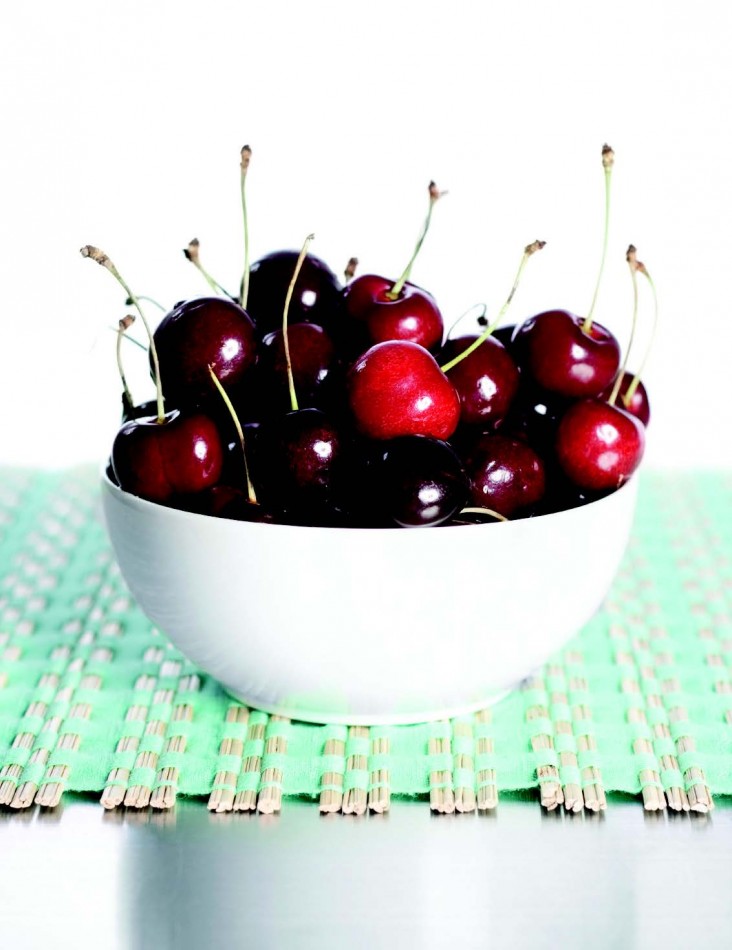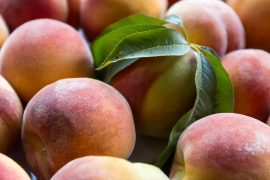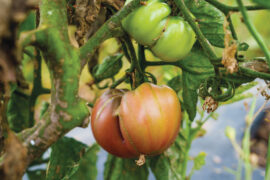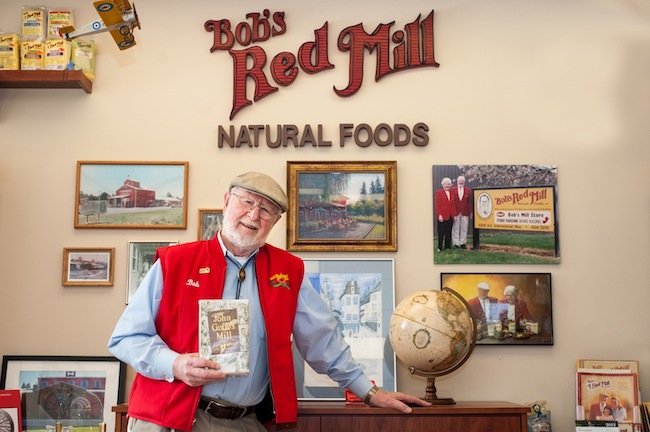A red-tailed hawk floats over a stand of cherry trees cascading down a hillside in The Dalles. Mt. Hood and Mt. Adams rise in the distance. Below, the Columbia River flows lazily through granite cliffs. Bob Bailey, chairman of the board for Orchard View Farms, seems pleased as he watches the bird circle. “They’re our favorites,’ he says ‘That’s our rodent control, so we take good care of them.’
Bailey’s family has been growing cherries in these hills for more than eighty years, when his grandparents made their first investment in a piece of farmland. Since then, Orchard View Farms has grown to include 2,050 acres in four counties. The orchard is home to twelve types of sweet cherries, from perennial favorites Bing and Rainier to more unusual choices, such as Sweetheart and Skeena.
This mix of locations and varieties extends the growing season. Even after the farm’s best efforts, however, the trees produce fruit for only eight to nine weeks between June and August. During that time Orchard View’s staff increases nearly eight-fold to 700.
“It’s a blessing and a curse that we’re so labor intensive,” Bailey says. “The uncertainty around labor is one of our biggest threats.” Yet the investment in human labor helps him achieve his top priority–to preserve the quality of the fruit. Workers pick cherries entirely by hand and transport them to the packing facility, which is located on the farm’s property in The Dalles. The staff strives to ship fruit within twenty-four hours of picking. During peak season, the processing plant will fill eight to ten refrigerated trucks a day.
Like the Bailey family, the state of Oregon has a long history with cherries. Frank Seufert planted the first commercial cherry orchard in The Dalles in 1886 (more than six years before the first commercial hazelnut orchard was established). The Bing cherry, one of the most commercially successful varieties, was developed by Seth Lewelling, who established Oregon’s first plant nursery. In the 1930s, Ernest Wiegand, a professor at Oregon State University, perfected the process for making maraschino cherries.
Today Oregon is the nation’s third largest producer of cherries, growing 11 percent of the fruit sold in the United States. Wasco County, home of The Dalles, is nicely situated for the task. The region receives around twelve inches of rainfall annually, nearly all of it coming in the winter. This rain, coming in the off-season, benefits cherries, which are otherwise susceptible to fungus in areas of high humidity. Heavy summer and fall rain can split a cherry’s delicate skin.
“The secret to having a successful cherry operation is figuring out where you’ll get hot days and cool air at night,” says B.J. Thurlby, president of Northwest Cherry Growers, “Cherries always seem to grow well at the base of mountains.” The quality soil in the area doesn’t hurt either.
It’s tough to grow cherries organically, Bailey says, but Orchard View uses sustainable practices and does its best to be a good neighbor. “We try to be efficient with how we use our land and water,” Bailey says. “We think through why we’re using a chemical or fertilizer.” The farm engages in habitat restoration and keeps its land open to hikers, bikers and horseback riders.
While Orchard View Farms is the state’s largest cherry grower, it’s not alone. According to the Oregon State University Extension Service, 900 family farms produced nearly 25,000 tons of cherries in 2008. Sixty-five percent of sweet cherries were sold fresh, 31 percent were used for maraschinos, and 4 percent were canned and frozen. Just a decade ago, more than 70 percent of Oregon cherries became maraschinos.
The surge in fresh cherry sales is closely tied to the recent increase in the export market, Thurlby says. “The fresh market is expanding worldwide,” and has been since 2006, he adds. Nearly 40 percent of Oregon cherries are sold overseas, with China being the largest recipient.
Sweet cherries lend themselves to a variety of presentations, both sweet and savory. Chef Ben Stenn is well positioned to enjoy the bounty of fresh Oregon cherries from his Celilo Restaurant and Bar in Hood River. “The fruit is delicate when properly ripened,” he says. “When the sugars are peaking, they don’t transport well. It’s a safer journey to go a few miles down the valley rather than cross country in a truck.”
Stenn’s location also gives him a chance to get to know the growers, a relationship he cherishes. “The single most important thing about using Oregon cherries is that we know the farmers,” says Stenn. “The connection to the food is what makes it real.”
Celilo’s cherry tart recipe is Stenn’s favorite way to use cherries and is a nice twist on the classic cherry pie. “The tart reminds me of my mother’s pie recipe,” he says. “She was a pie expert, and I always requested one for my birthday instead of cake.”
Bill Heubel, executive chef at the Jacksonville Inn, also enjoys a sweet presentation for cherries. His cherry-citrus strudel combines the fruit with tart orange zest and lavender blossoms.
“I like to be sure the cherries I use are firm, dark in color and unblemished,” Heubel says. Given that the short growing season makes it impossible to enjoy fresh cherries year-round, he buys them in bulk, pits them and freezes them to extend the season.
Whether fresh or frozen, cherries lend themselves to so many recipes, says Dolan Lane, executive chef at Portland’s Clarklewis restaurant. “We have a wood-burning oven, and naturally grilled meats with that hint of smokiness go well with the cherries.”
Lane uses Oregon favorites like cherries and blue cheese in a terrine, which is a mixture of ingredients that’s molded, chilled and served in slices. When using a cherry stoner to pit the fruit, he suggests holding your hand inside a paper bag to cut down on splatter.
Stephanie Pearl Kimmel, founding chef of Marché in Eugene, likes to pair the fruit with chocolate or black pepper. Cherries and Pinot noir make a “classic combination,” she says, one that she uses in grilled pork chops with cherry-Pinot noir sauce (p. 100). “If you’re going to cook cherries, you need to do something that brings out the juiciness,” she says. “That’s why I like a compote.”
Although Bailey enjoys the occasional cherry pie, he really believes the fruit should be eaten fresh whenever possible. “Cherries are good for people,” he says. “I’m an advocate of eating fruit every day.”








